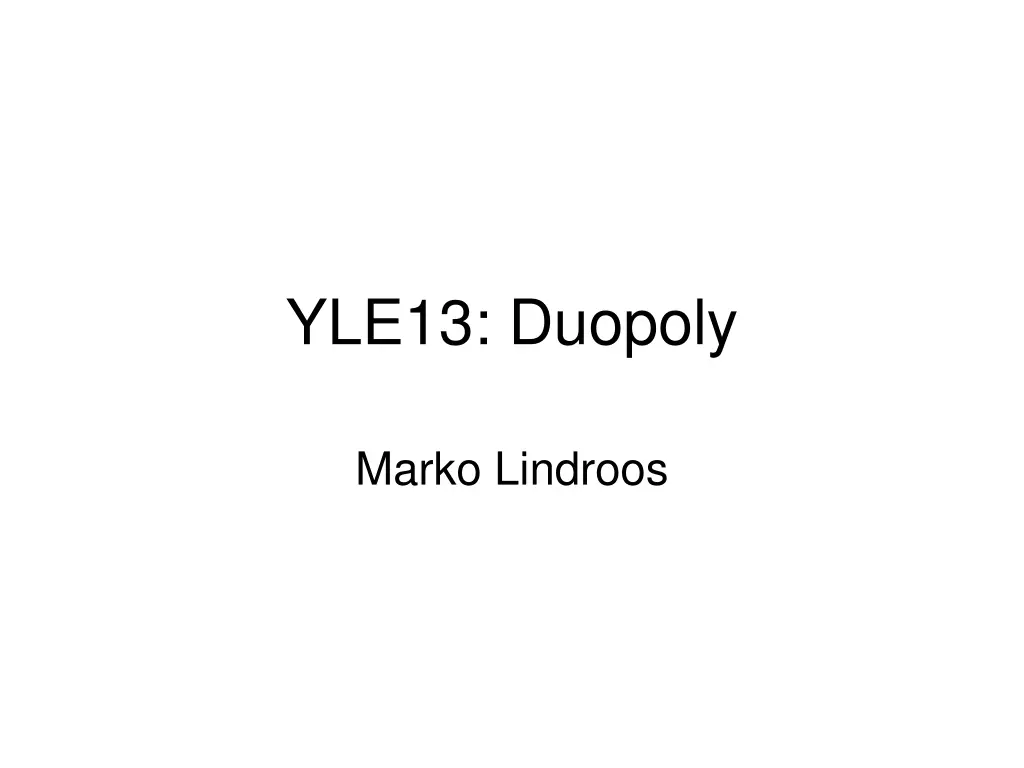
Strategic Analysis of OPEC Market Power and Cartel Formation
Explore market power dynamics in OPEC through game theory models like Nash equilibrium and Stackelberg equilibrium. Analyze individual countries' incentives for production within the cartel.
Download Presentation

Please find below an Image/Link to download the presentation.
The content on the website is provided AS IS for your information and personal use only. It may not be sold, licensed, or shared on other websites without obtaining consent from the author. If you encounter any issues during the download, it is possible that the publisher has removed the file from their server.
You are allowed to download the files provided on this website for personal or commercial use, subject to the condition that they are used lawfully. All files are the property of their respective owners.
The content on the website is provided AS IS for your information and personal use only. It may not be sold, licensed, or shared on other websites without obtaining consent from the author.
E N D
Presentation Transcript
YLE13: Duopoly Marko Lindroos
Research questions Market power and the formation of cartels (OPEC) Dynaamic game theoery models Nash equilibrium Stackelberg equilibrium(cartel leader, others followers) Stability? Individual countries in OPEC have an incentive to produce more
Duopoly Two identical firms, linear demand Max T rt b + ( ( ) ( )) ( ) e p q t q t q t dt 1 2 i 0 St = ( ) ( ) x t q t i i
Hamiltonian for firm 1 = + b ( ( ) ( )) ( ) ( ) ( ) p q t q t q t t q t 1 1 2 1 1 1
Maximum principle H 1 = 0 q 1 pb = 2 ( ) ( ) ( ) q t q t t 1 2 1 H 1 = ( ) ( ) t r t 1 1 x 1 rt 1) ( = t e 0
Timepath of costate variable Backstop-price at T is equal to shadow price (see previous conditions) pb = 1T ( ) ( ) be r t T 1) ( = t p
Reaction function ( ) b b r t T = 2 ( ) ( ) p q t q t p e 1 2 ( ) b r t T b + ( ) p e q t p 2 = ( ) q t 1 2
Extraction paths + ( ) b r t T b ( ) p e q t p = ( ) 1 q t 1 2 ( ) b r t T b 3 p e p = ( ) q t 1 2 2 b p ( ) r t T = = ( ) 1 ( ) ( ) q t e q t 1 2 3
Time of exhaustion rT b b 3 p p e d b + = p T x 0 d 2 r r
Price path b p = + = + ( ) b r t T ( ) ( ( ) ( )) 1 ( 2 ) p t p q t q t e 1 2 3
N firms + ) 1 ( ) b r t T b ( ( ) p e N q t p = 1 ( ) q t 1 2 ( ) b r T t b 1 N p e p ) 1 + = ( q 1 2 2 b p + ( ) r t T = = = = 1 ( ) ... q e q q 1 2 N ( ) 1 N rT b b + 1 p p e N n b + = p T x 0 n r r N
